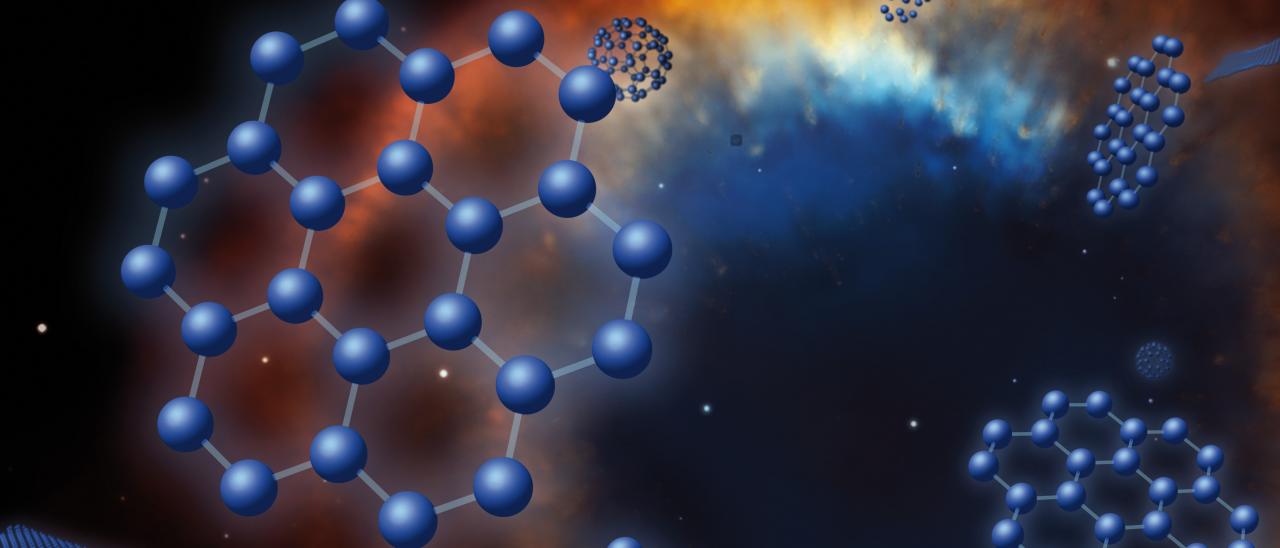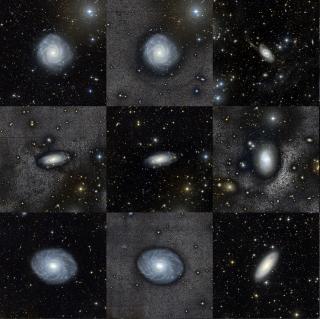Subvenciones relacionadas:
General
Las estrellas de masa baja e intermedia (M < 8 masas solares, Ms) representan la mayoría de estrellas en el Cosmos y terminan sus vidas en la Rama Asintótica de las Gigantes (AGB) - justo antes de formar Nebulosas Planetarias (NPs) - cuando experimentan procesos nucleosintéticos y moleculares complejos. Las estrellas AGB son importantes contribuyentes al enriquecimiento del medio interestelar, donde nacen nuevas estrellas y planetas (incluyendo nuestro propio Sistema Solar Temprano, SST) y a la evolución química de sistemas estelares como cúmulos globulares (CGs) y galaxias. En particular, las AGBs más masivas (M > 4-5 Ms) sintetizan (radio)isótopos muy diferentes de los formados por AGBs menos masivas y explosiones de Supernova debido a los diferentes mecanismos de nucleosíntesis. Las estrellas evolucionadas en la fase de transición entre AGBs y NPs también forman diversos compuestos orgánicos como PAHs y nanoestructuras moleculares de fullereno y grafeno, siendo un maravilloso laboratorio Astroquímico. Colaboraciones astronómicas punteras como SDSS-IV/APOGEE-2 y el próximo telescopio espacial James Webb representan un paso fundamental para entender la nucleosíntesis y los procesos moleculares en estrellas evolucionadas. Se pretende explorar la nucleosíntesis de (radio)isótopos ligeros/pesados en estrellas AGB y como éstas contribuyen a la radioactividad del SST así como a la formación/evolución de CGs y galaxias. También se pretende entender el proceso de formación "top-down" de nanoestructuras moleculares de fullereno y grafeno en estrellas evolucionadas. Finalmente, se pretende realizar minería de datos obtenidos con el satélite Gaia, para estudiar la fase evolutiva AGB-NP, y además utilizar el telescopio espacial GALEX para descubrir estrellas binarias en NPs Galácticas.
Miembros
Resultados
1. Durante 2020, se han publicado 37 artículos en revistas astronómicas internacionales con referee de alto impacto (incluyendo un review invitado), así como 2 artículos en la revista de Química-Física FNCN.
2. Se han descubierto, por primera vez, estrellas muy ricas en fósforo y cuyo patrón químico no es predicho por ninguna teoría actual de nucleosíntesis estelar.
3. Se ha demostrado que las estrellas ricas en fósforo representan un nuevo sitio estelar para la formación de elementos muy pesados, con importantes implicaciones para la evolución química de nuestra Galaxia.



